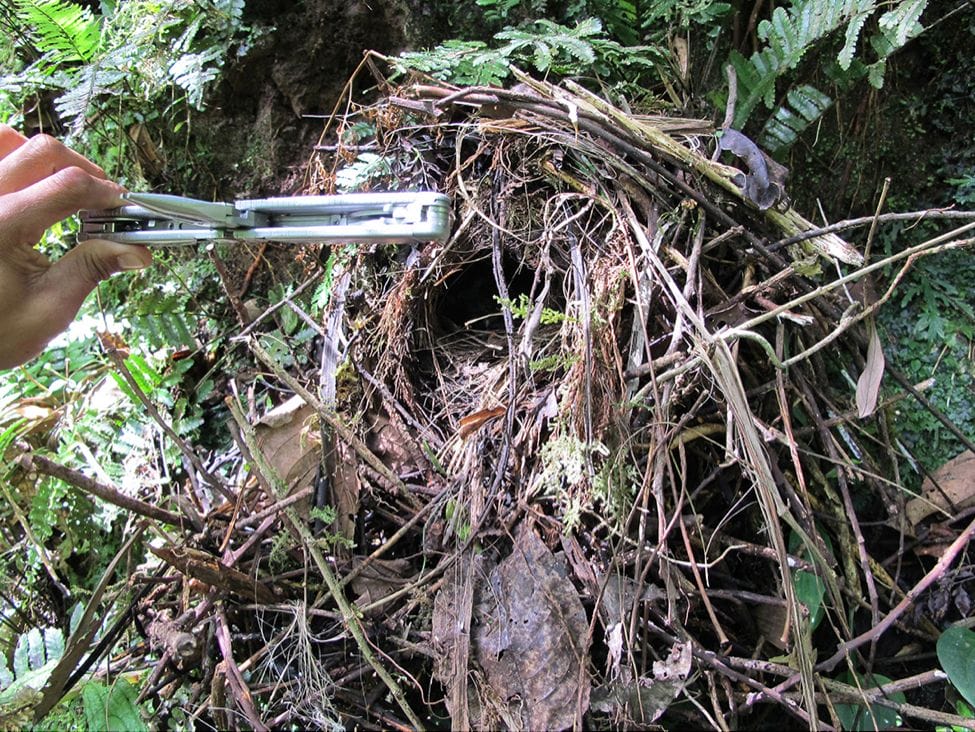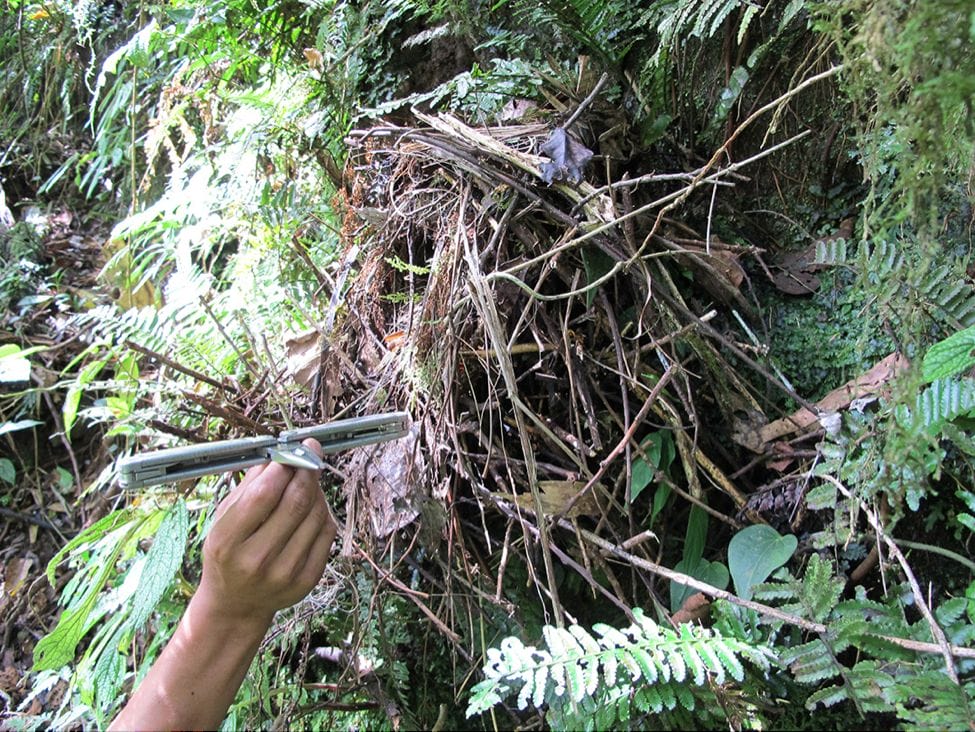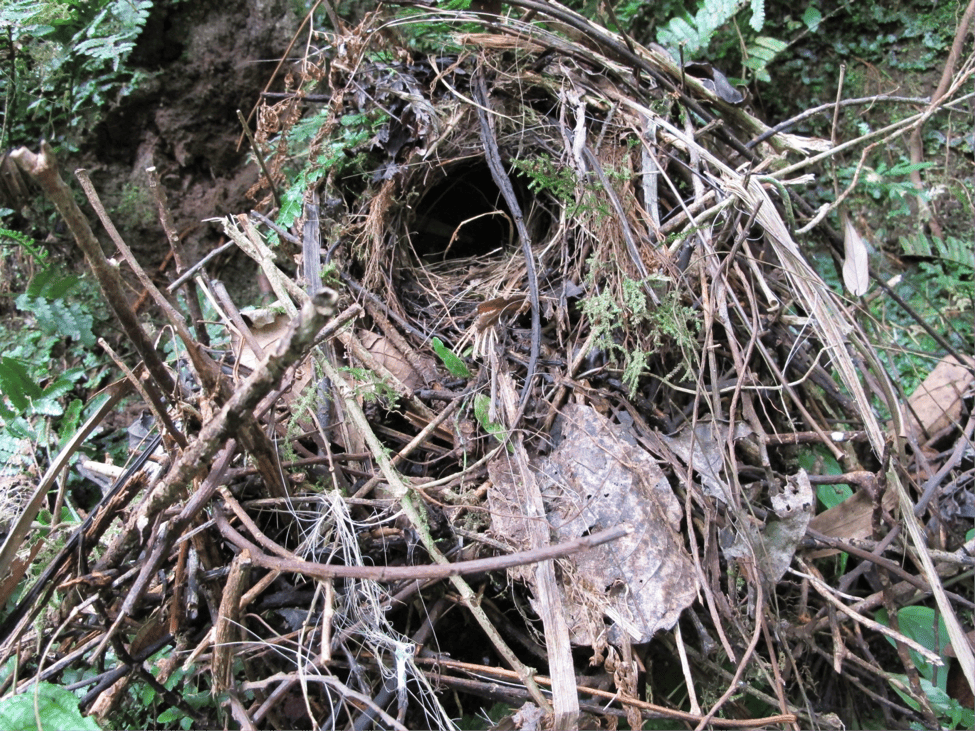Neon Rosell II and Chris Ceriban follow up a hunch with a long trek and good field work. They describe the first documented sighting of a Whiskered Pitta nest and nesting behavior.
space
Whiskered Pitta (Pitta kochi) – First Documented Sighting of its Nest and Nesting Behaviour
By Neon Rosell II and Chris Ceriban
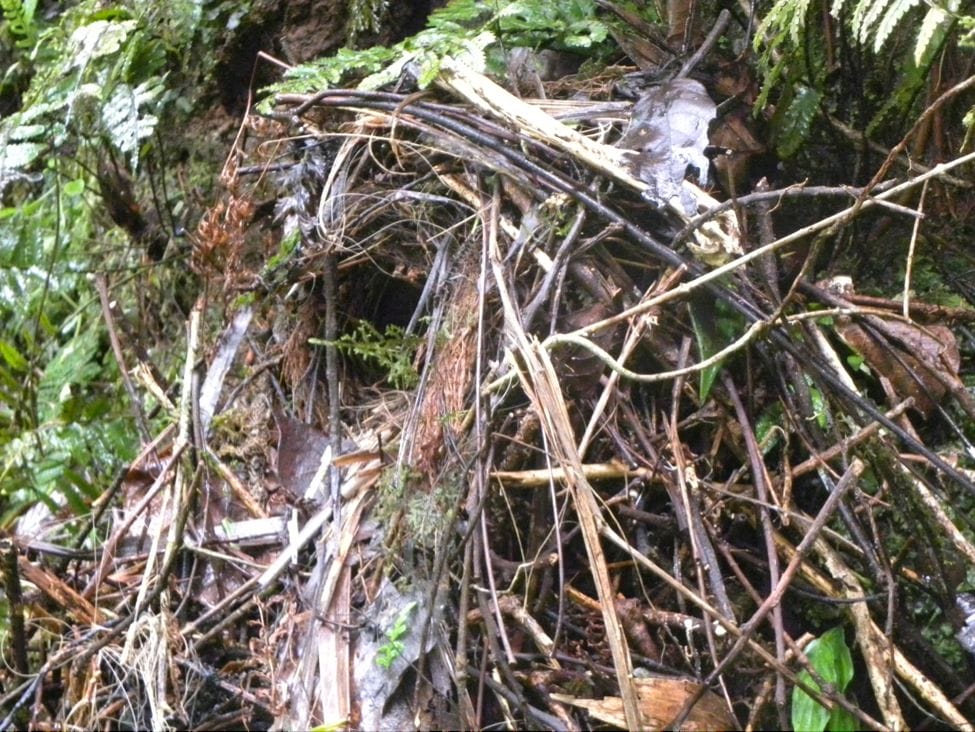
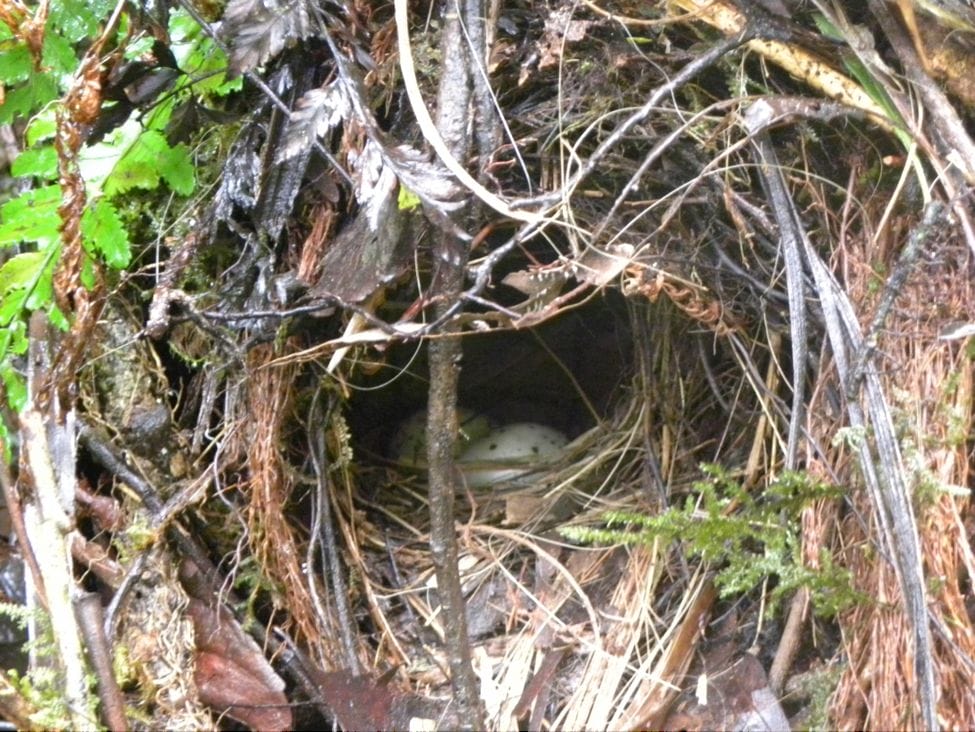
The Whiskered Pitta is the largest pitta species in the Philippines measuring 229 mm in length from the tip of bill to the end of tail. It is recorded only from limited sightings in montane forest above 1000 meters MSL in the Sierra Madre, the Cordilleras and Mt. Isarog in Bicol. It is also reported to occur in Mt. Banahaw when a sighting was recorded in 2010 by a survey team headed by Carmela Española at the Tayabas side of the mountain. A lot of bird species from the Philippines are data deficient, including the Whiskered Pitta. This hinders any conservation efforts as the ecology and biology of a species should be established for a project to prosper.
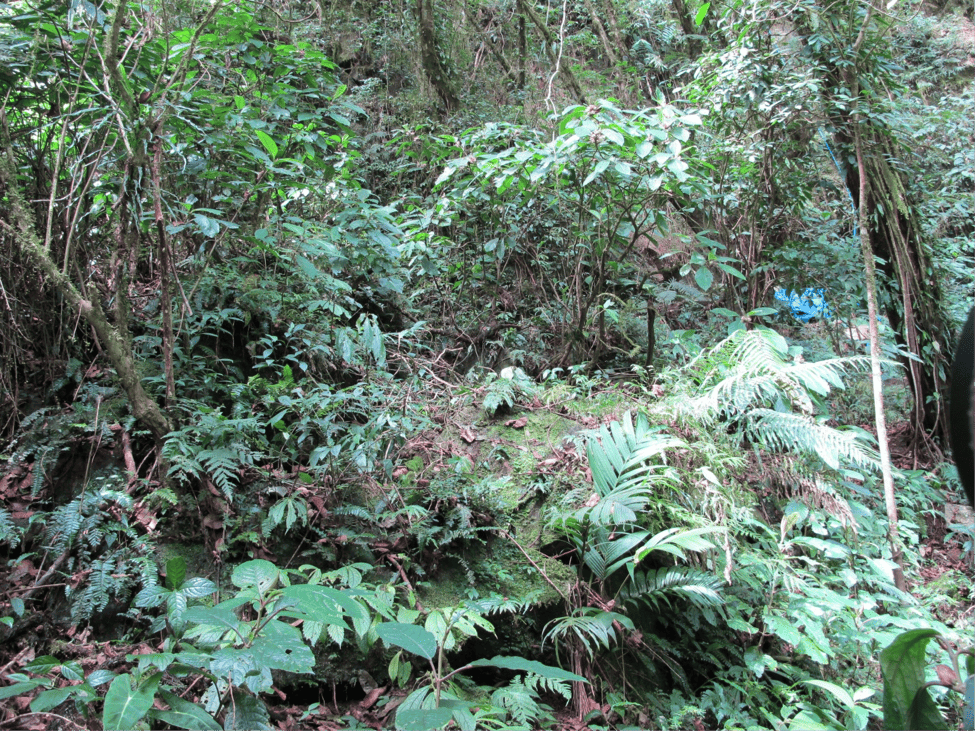
Mystery Bird, Eggs, and Nest
On June 17, 2012 Chris Ceriban, one of the locals in Bangkong Kahoy Valley, Dolores, Quezon showed the author a photo of a nest with two white eggs with brown speckles. Asked when the photo was taken, he said, “about two weeks ago”. He also said that when he flushed the bird from the nest, he was just a few meters from it. The bird he saw flying from the nest was black with a red nape.
With limited knowledge about bird nests and nesting behavior, the book “A Guide to the Birds of the Philippines” by R.S. Kennedy et al was consulted. Chris was asked to describe the sizes of the nest, eggs and nest hole. He motioned with his hand, indicating that the eggs were about the size of a pigeon’s egg, approximately 25 mm. He said the nest was about 610 mm wide and nest hole at 63 – 76 mm. With these measurements, the book was searched further. Nothing in the book matched the what Chris had described. Upon reading the portion in the Kennedy guide that describes the Red-bellied Pitta nesting behavior, it was noted that the nest description in the book closely matched the nest in the photo except that the nest Chris saw was larger. Based on this and the description of the bird, it was concluded that the nest most likely belongs to the larger pitta species – a Whiskered pitta.


Further observations needed to be made to be able to confirm the identity of the bird. We assumed that the eggs were newly laid two weeks before Chris took the photo. We assumed that the parent bird was sitting on the eggs until Chris flushed the bird from the nest. We also assumed that if the bird had been sitting on the eggs when Chris first spotted the nest two weeks before, then it was likely that the eggs could have already hatched. Chris went to check on the nest again on 19 June 2012 and reported that the eggs had indeed hatched. He took photos of nestlings. A photo expedition to the nesting site was arranged for the following day. On 20 June 2012, a trek to the nesting site was conducted.
Nest Description and Confirmation of Whiskered Pitta ID
To minimize disturbance in measuring the nest, instead of physically measuring with tape measure or any measuring instrument, photo documentation was conducted using a 220 mm pocket knife as a scale on each photo that was taken for analyses after leaving the site.

The nest is built in the open on a rock ledge about 1500 mm from the ground. Using both GPS and a digital watch with altimeter, its location is approximately 1095m AMSL in elevation. It is generally oval in shape measuring 440 mm in height, with a base of 400 mm tapering to the main nest at 250 mm in diameter, with the round side entrance measuring 80 mm in diameter. The nest is constructed with mostly twigs, grass blades and loose whole leaves. The construction appears to be in two phases with large twigs arranged to make a strong base for the second stage (main nest) which consists of soft, long grass like material that line the inside. The round main nest chamber is a shallow bowl like depression.
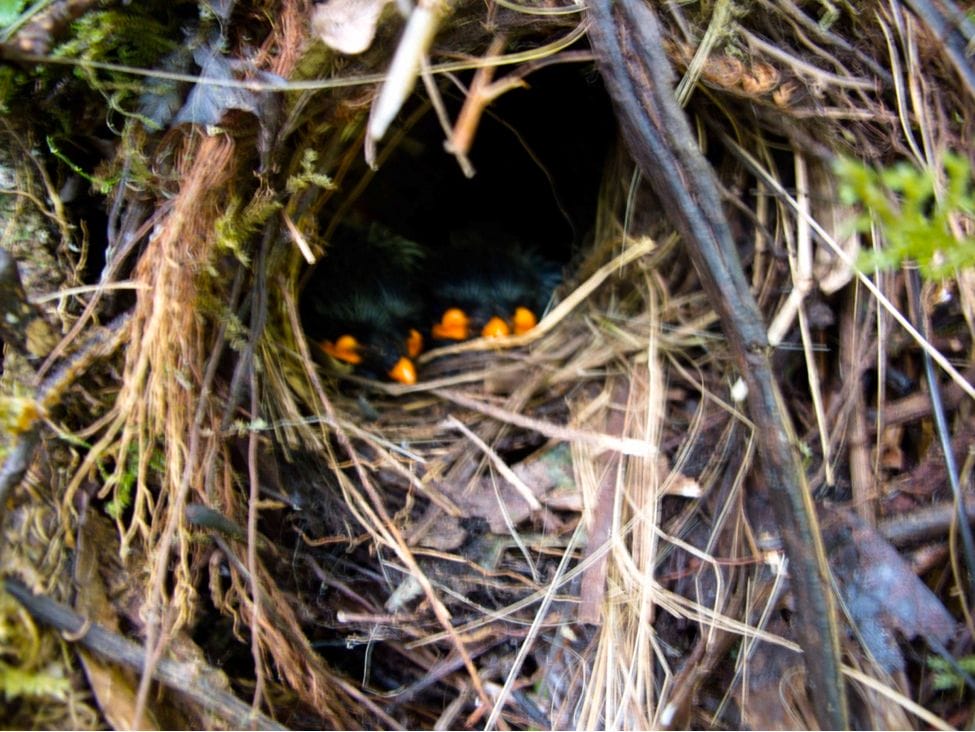
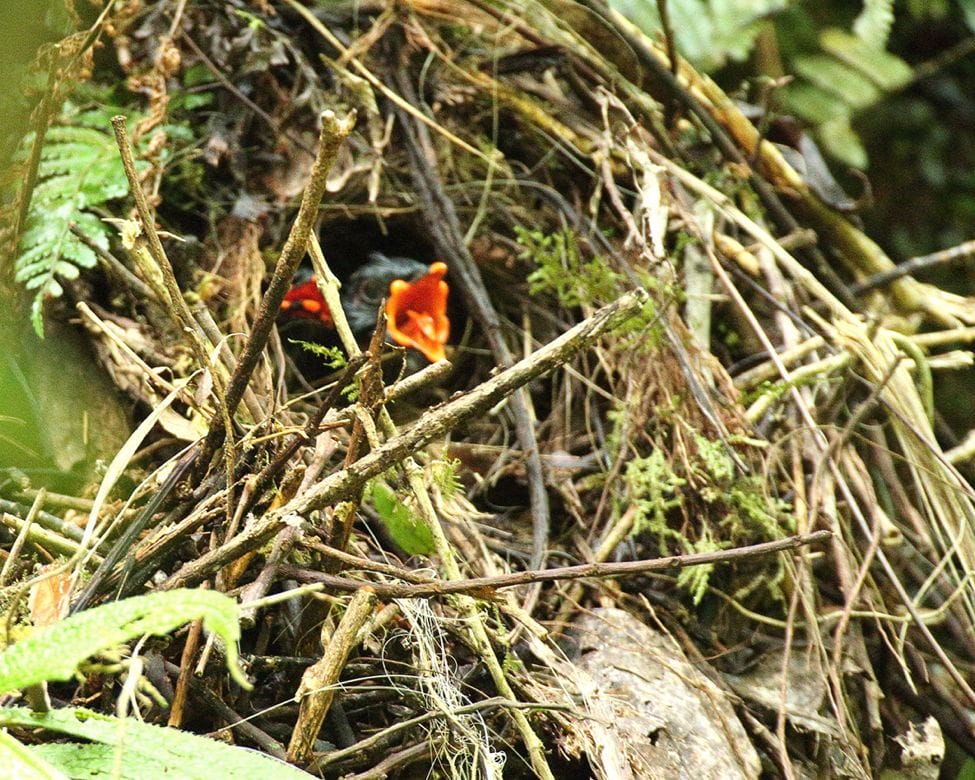


A second expedition to document the nesting behavior was conducted on 27 June 2012 but unfortunately the nest was already empty. Chris Ceriban went up to the nest area the previous day and the nestlings were still in the nest but he commented that they looked ready to jump off. He took some documentary shots showing the characteristics of the nestling a day before it fledged.

I wish to acknowledge the “Nest reporting and caring” scheme of Ramon Quisumbing and Dion Pullan of Bangkong Kahoy Valley. Their successful conservation program brought about understanding among the locals about conservation in general. Their nest reporting scheme has made a great impact in the discovery of new species in the area. In the first year of the nest reporting scheme, three nesting behaviors of rare species have been discovered, including this Whiskered Pitta nest. There were also countless other nests of more common birds that were reported. The nests were successful, thereby increasing the bird population in the area.

